Alaskan River Riches: A River Town in Transition
Air Date: Week of August 14, 2015
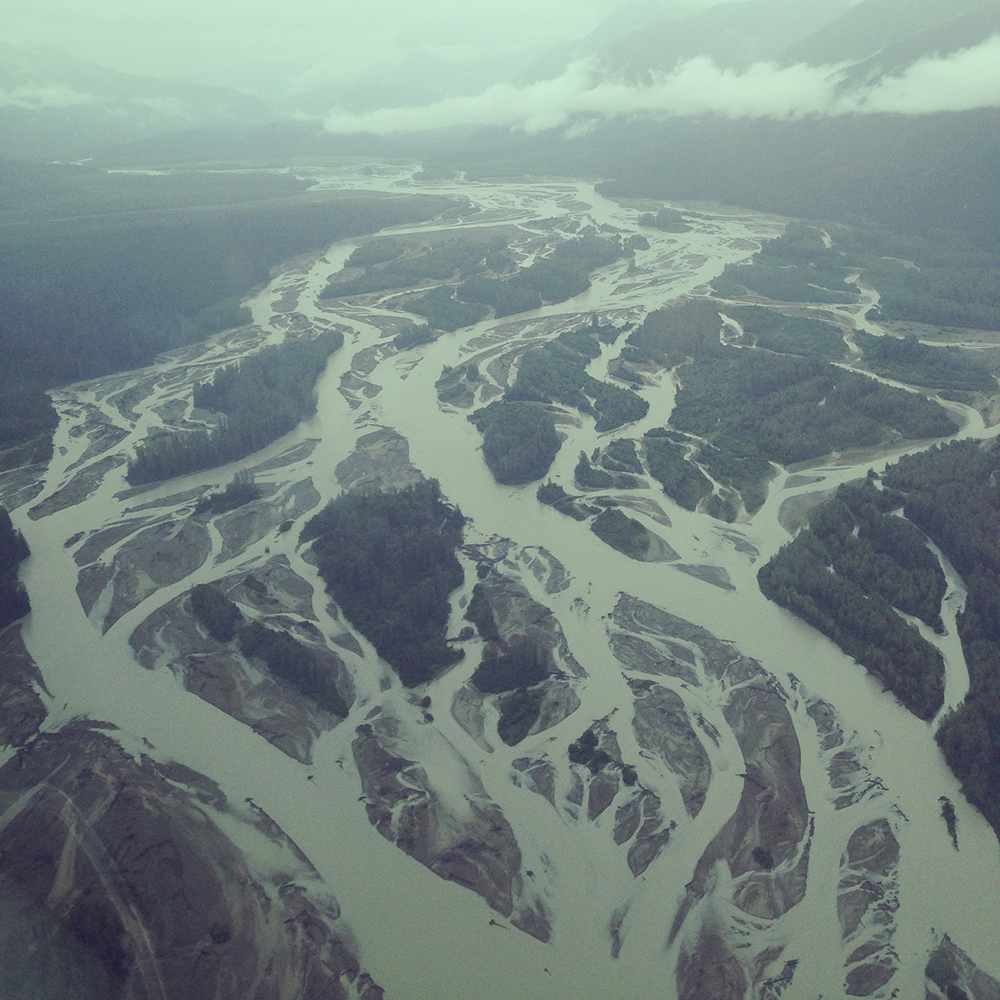
The Stikine River (Photo: Emmett FitzGerald)
Wrangell, Alaska is a small, isolated town at the mouth of the mighty Stikine River. As Living on Earth’s Emmett FitzGerald reports, Wrangell was once a timber capital, but since the saw mills shut down in the ‘90s, the small town has reinvented itself as a tourist destination and a commercial fishing hub. Since both of these industries are dependent on the Stikine, some locals worry that mining development upriver could put the town’s economy at risk.
Transcript
CURWOOD: It's a recycled edition of Living on Earth. I'm Steve Curwood. Southeast Alaska is a patchwork of tiny coastal towns, connected only by a network of ferryboats. The ferries run 24/7 all year long, carrying backpackers, businesspeople, and high school sports teams from one town to the next. If you take the afternoon ferry heading south from Juneau, at about 5 in the morning you’ll get to Wrangell. This sleepy little fishing town is located on Wrangell Island, a few miles from the mouth of the Stikine River, and is home to just over 2,000 people. Every summer locals head out of town and travel up the Stikine to fish and hunt, and the river is the center of an emerging tourist economy. Living on Earth’s Emmett FitzGerald headed to Wrangell for this report.
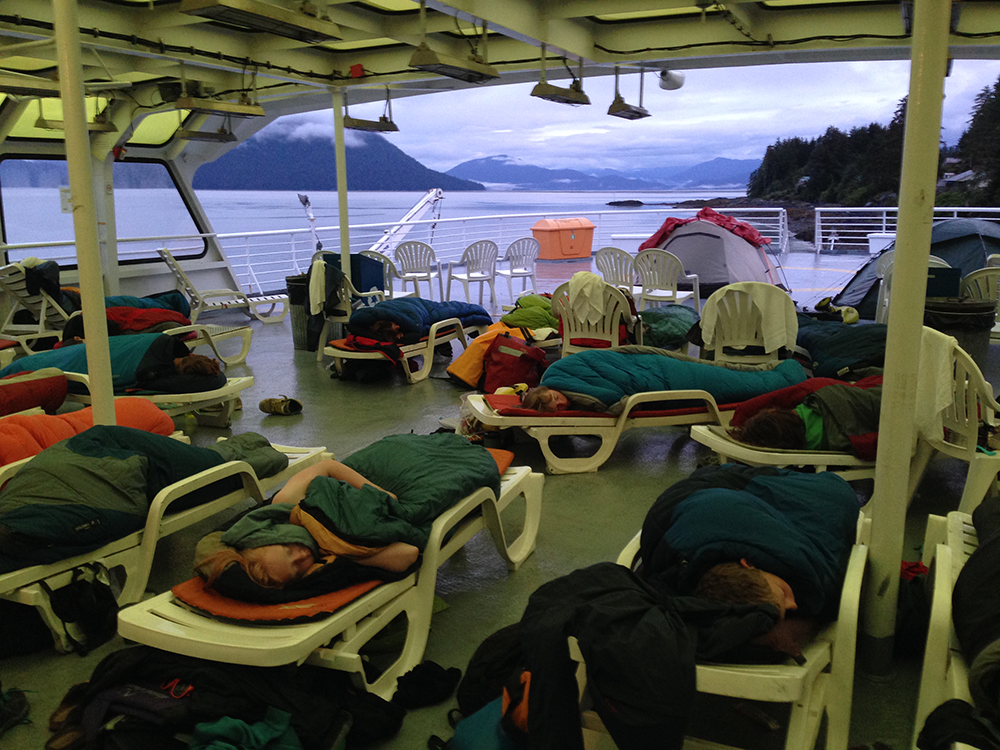
Passengers sleep on the ferry that runs between Juneau and Wrangell. (Photo: Emmett FitzGerald)
FITZGERALD: Nancy Barlow, a kind-faced woman of about sixty five, first came to the little town of Wrangell on a ferryboat 16 years ago.
BARLOW: I came up on the ferry, spent a month running around the interior, and then spent another month coming back down stopping at all islands along the Inside Passage and I stopped here.
FITZGERALD: Wrangell has two harbors, 4 bars, 1 hotel (the Stikine Inn), and the only 9-hole golf course in Southeast Alaska. Nancy says it didn’t take her long to fall in love with the place.
BARLOW: The people are friendly, the dogs are friendly, [LAUGHS] and it’s just a beautiful little town.
FITZGERALD: Now Nancy’s the manager of a youth hostel based in the first Presbyterian Church. Life in Wrangell is isolated, but Nancy says that she meets people from all over the world, and has neighbors of all species.
BARLOW: When you go for a drive you have to be careful; there might be a deer crossing the road, you might see a moose, oh there’s a bear over at the airport. It’s the natural environment that people down south don’t ever get to see.
FITZGERALD: One of the most striking aspects of that environment is the Stikine, a glacier-fed river that springs up in the mountains of British Columbia and empties into the sea in a muddy delta a few miles outside of Wrangell.
HAASATH: I can recall first time I went up the river I was eight years old.
FITZGERALD: Einar Haasath is an elder in Wrangell’s Tlingit community, one of the biggest tribes in Southeast Alaska. He says when it comes to the Stikine, his grandmother taught him everything he knows.
HAASATH: I can remember my grandmother, she came to Wrangell in 1927 and the following year she met up with a couple of old friends and they took her up the river and they went after subsistence fish, and she continued to do for several years and kind of instilled in me that that’s a good practice, at least you can put food on the table.
FITZGERALD: So he follows his grandmother’s advice.
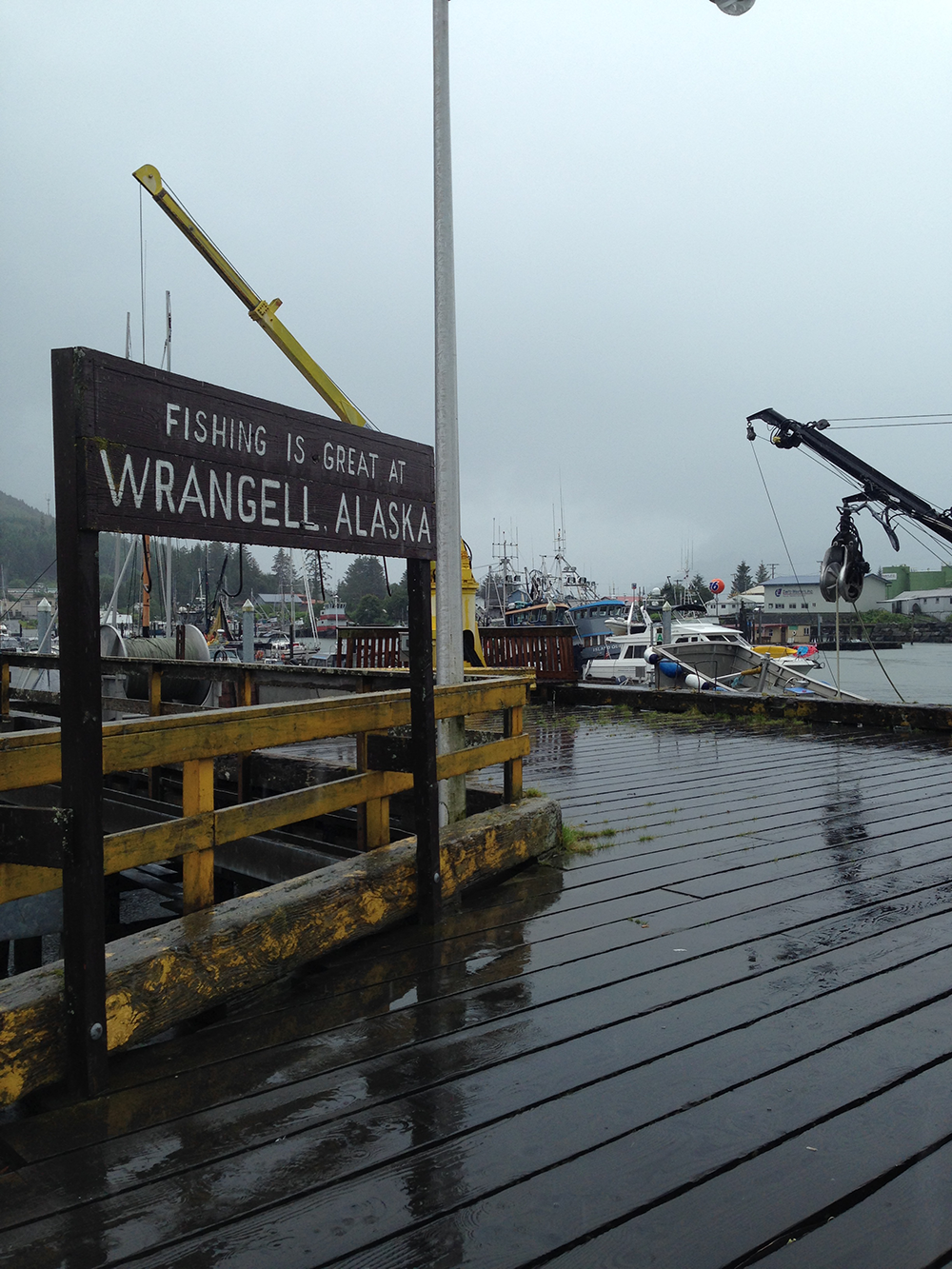
The commercial fishing dock in Wrangell (Photo: Emmett FitzGerald)
HAASATH: Each year I go up there and get sockeye and put that up for the winter, and do my moose hunting and I’m not successful all the time but nobody is. And then as far as berry picking and all that I gather high bush cranberry every year and bring it down. You know, it’s pretty productive.
FITZGERALD: When Einar was a kid he would take a riverboat 60 miles upstream, across the Canadian border and deep into British Columbia to a little river town called Telegraph Creek.
HAASATH: And I kind of thought, yeah this is the place to be because there was a hustle and a bustle up there, and that was the first time I ever run into a horse. Saw a horse for the first time.
FITZGERALD: In Telegraph, Einar met people from the Tahltan First Nation, a Canadian Tribe from the Upper Stikine. The Tlingits and the Tahltan shared the river and its resources for centuries. The coastal Tlingit traded what they got from the ocean, shell tools and oil from a fish called the Eulachon, to the interior Tahltan for caribou hides, moose, and snowshoes. Marge Bird, a Tlingit elder in Wrangell today, remembers the trade from when she was a little girl.
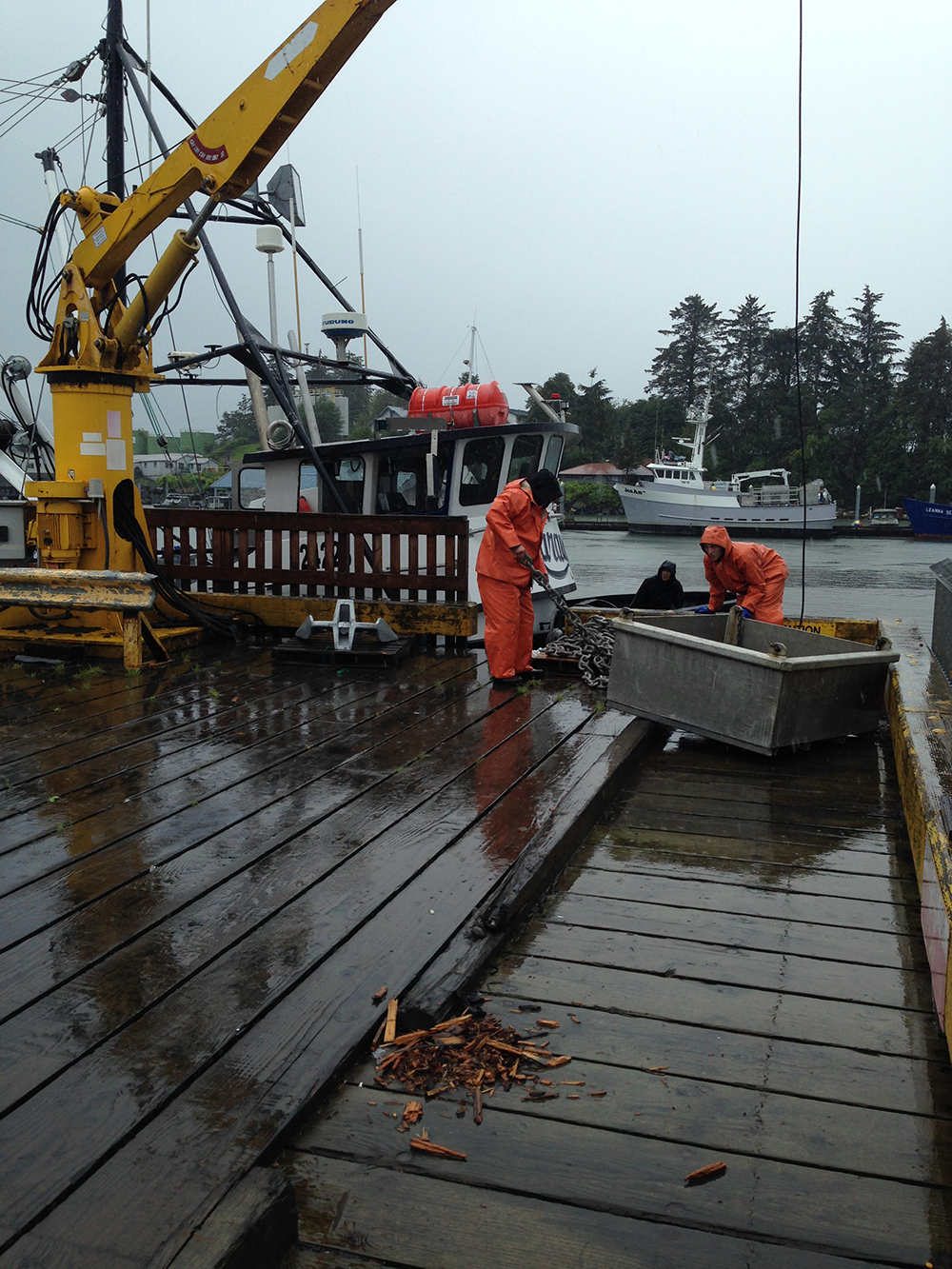
Fishing boat crew members load up their vessel. (Photo: Emmett FitzGerald)
BIRD: The people from Telegraph would come down there and bring their smoked moose hides and their dried fish because they can dry it up there, and trade, trade our halibut and different things we could get here with what they got up there.
FITZGERALD: But Native Alaskan’s weren’t the only ones interested in the river’s bounty. Russians arrived in the late 18th century in search of fur. And they found willing trading partners in the Tlingit, who often acted as middlemen, selling them otter and beaver pelts they got from the Tahltan at a higher price. Then the Hudson Bay Company got involved in the fur trade, and by 1850 the otter and beaver populations had collapsed. But in the 1860s prospectors discovered gold, and the Cassiar and Klondike gold rushes brought waves of settlers to the Stikine and its tributary the Iskut. By the turn of the century they had established the town of Wrangell at an old Russian fort a few miles from the river. The mineral resources in the area are vast, and Angie Eldred of the Southeast Alaska Watershed Council says that gold mining continued in the 20th century.
ELDRED: In the 1980s and up to I think the late 90s there were two mines on the Iskut where they were mining gold, it was a smaller scale operation, but they were shipping a lot of the ore out on hovercrafts and by air plane and so it went through Wrangell and it provided jobs.
FITZGERALD: But larger mines could be on the way. In 2014, British Columbia completed a 750 million dollar powerline to bring cheap electricity to the Upper Stikine. With that in place, three new Canadian copper and gold mines are now in development. Angie says that people in Wrangell have supported mining in the past, but these mines are a different story.
ELDRED: Wrangell doesn’t stand to gain anything. There’s no jobs coming to Wrangell, we just stand to – you know - take on all of the risk if something were to go wrong.
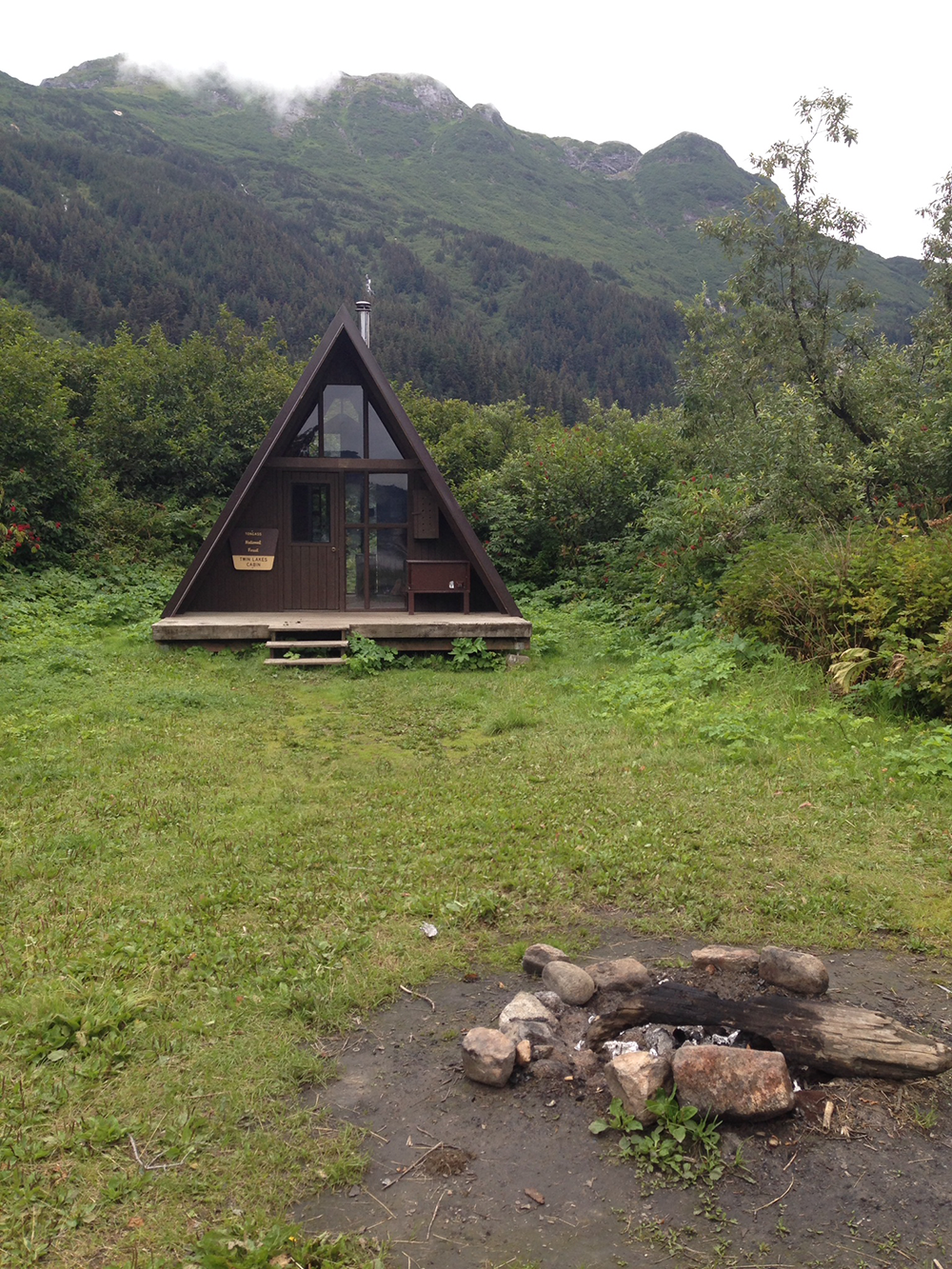
This Forest Service hut is one of the only buildings for miles in the Stikine-Leconte Wilderness area. (Photo: Emmett FitzGerald)
FITZGERALD: The new mines are Shaft Creek, Galore Creek and Red Chris.
ELDRED: And all of those mines are on tributaries of the Stikine River. So you know it’s all part of that watershed and if anything were to go wrong or there were to be a water quality impact it’s going to wash downstream and it’s going to impact all of our resources that are downstream and on this side of the border.
FITZGERALD: Angie’s not the only one concerned about the impacts of mining. Brenda Schwartz-Yeager has lived in Wrangell her whole life, and takes tourists on boat trips up the river to see the wild glacial landscape of the Lower Stikine. I met her on board her jet boat in the rain.
SCHWARTZ-YAEGER: Wrangell wouldn’t be here today or earlier if it wasn’t for the bounty of the river. The whole reason this community is here is because of the river. I mean the natives came down the river and settled this area because it was so rich and bountiful. And the reason it’s so rich and bountiful is all these nutrients in the river and all the fish.
FITZGERALD: Brenda’s family has lived in Wrangell for over a century, and they’ve always made their living from the river. Her grandmother was a trapper, and her father was a scientist who studied the Stikine.
SCHWARTZ-YAEGER: My dad was a fisheries biologist for this area, game warden, and probably one of the first Caucasian men to walk most all of the tributaries of the Stikine, looking at its massive salmon runs.
FITZGERALD: The river runs through the 450,000-acre Stikine-Leconte Wilderness—a swath of rugged mountains with old growth spruce and hemlock crawling up from the river valleys. It’s crowded with moose, lynx, grizzly bear, and one of the largest seasonal gatherings of bald eagles in North America.
SCHWARTZ-YAEGER: Wildernesses don’t really seem to work very well when they’re very small little postage stamps. In order for the ecosystem to really function, you need this vastness and the Stikine, the significance is it’s one of these vast places left in the world that’s fairly set aside and a little bit untrampled on.
FITZGERALD: Brenda says the few hardy tourists who travel the river with her won’t forget that vastness.
SCHWARTZ-YAEGER: I like to make them kind of take a breath and realize in a little bit of a way compared to all that vastness how kind of insignificant we are. Cause we’re kind of used to controlling everything all the time, changing the temperature, changing the lighting, and I think it’s a good experience for us humans to every now and then be out of control a little bit.
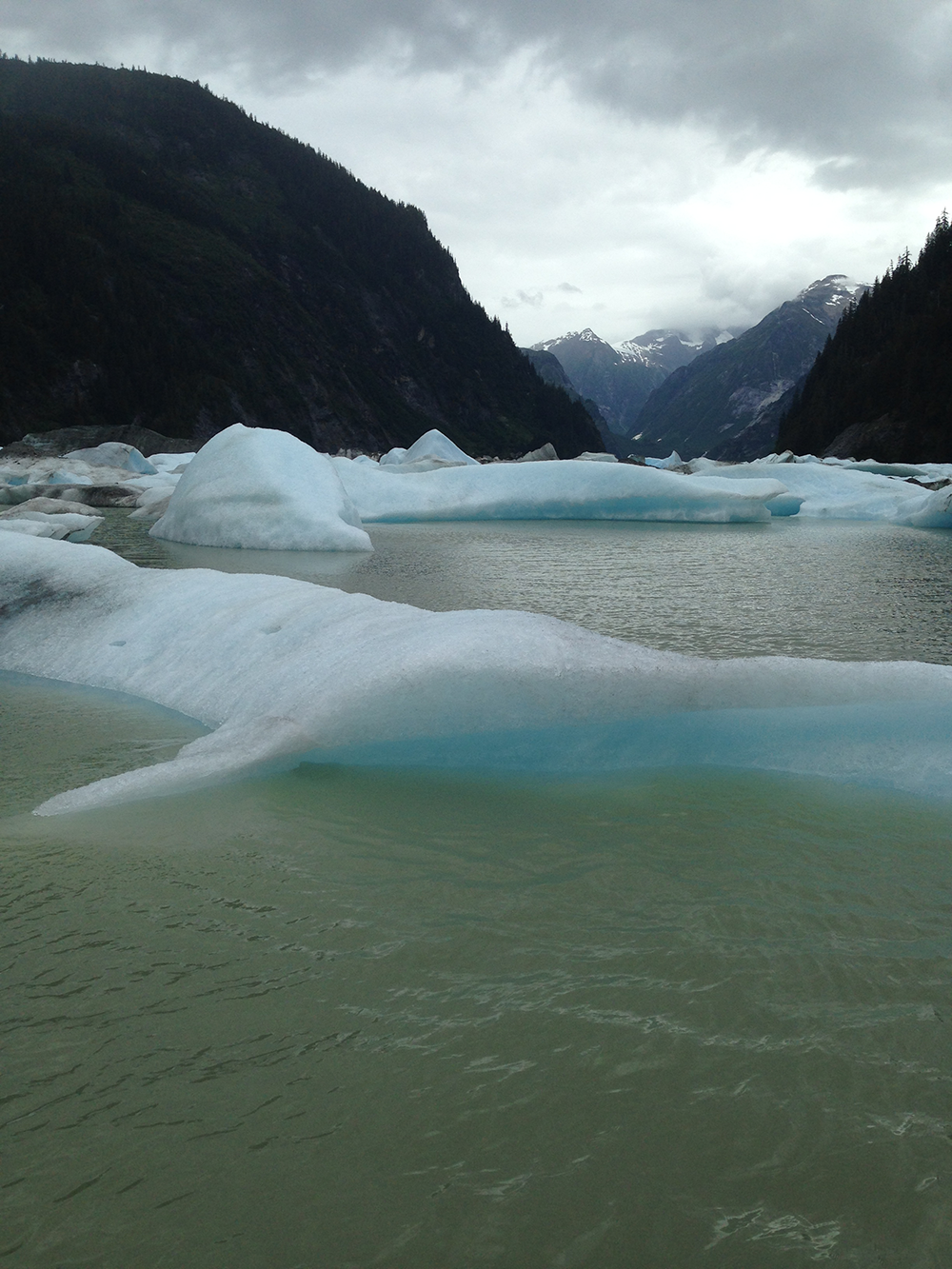
Shakes Lake, filled with icebergs that calved off of Shakes Glacier (Photo: Emmett FitzGerald)
FITZGERALD: Brenda’s all booked up this weekend, so I’m heading up the river with one of her friends, Mark Galla, burly, grey bearded, and wearing a red plaid coat like a good Alaska lumberjack. Mark runs one of the only other jet boat tours up the Stikine.
GALLA: 30 minutes time out of Wrangell and you’re kind of right in the middle of a wilderness where you have great fishing, hunting, glaciers, you know, it’s kind of all here and right out our back yard.
FITZGERALD: Right now his backyard is surprisingly undeveloped, but that could soon change. In addition to mines, Mark says that hydroelectric power has long been considered on the Stikine and the Iskut. Throughout North America large rivers have been dammed for hydropower, and Mark says there aren’t many wild rivers left. But the Stikine is one of the wildest.
GALLA: Fastest free-flowing navigable river in North America. Meaning there’s no dams or obstructions along the course of its length to impede any type of flow.
FITZGERALD: It may be the fastest wild river in North America, but down here near the ocean, the Stikine runs slow and brown. It’s laden with silt dragged down by over fifty glaciers that feed into the river valley. Mark starts up the boat and warns us it’s going to be a bumpy ride.
[ENGINE MOTOR STARTS; DRIVING SOUNDS CONTINUE]
GALLA: The deep water tends to cut from outside corner to outside corners. There are a few places where those corners aren’t what they should be, which we’ve learned from the school of hard knocks. So I’m not just zigzagging and doing it all for effect, it actually has purpose. And there’s a lot of times where it looks like there’s a lot of water, and there’s really none.
FITZGERALD: From the boat the river looks narrow, but Mark says this is just one channel in a tangle of braided waterways. As warned, he jerks the jet boat all over the channel, dodging rocks and shallow spots. The muddy banks are covered with gnarled driftwood and entire trees, ripped out and dragged down here by the rapids upstream. Around a bend an island appears in our way and Mark pulls the boat to a stop.
GALLA: So this is one of the major places where the guys set their subsistence nets. It’s right around this island. There’s usually one or two of three nets dangling off this.
FITZGERALD: Mark says he come up here to hunt. Deer, bear, moose, even mountain goats.

Tlingit Elder Marge Byrd (Photo: Emmett FitzGerald)
GALLA: Most all the mountains that you see surrounding the whole river corridor have mountain goats in them.
FITZGERALD: He points out a cluster of them, just tiny white dots against the high green hillside. As a light rain starts to fall, Mark steers the boat down a small side stream. Around a bend our view suddenly opens up and we’re in a lake packed full of giant blue icebergs. Mark says the ice calves off of Shakes Glacier at the other side of the lake, then floats down here.
[SOUNDS OF ICEBERG LAKE]
GALLA: Everything gravitates to the outlet, so all of the ice that comes off of the glacier ultimately is going to end up at this end.
FITZGERALD: Mark wants to show off the glacier, so he tries to steer the boat across Shakes Lake through a maze of icebergs.
GALLA: Sometimes you can work through the middle, but usually one side or the other you can kind of eke your way through and every time I come here I try it.
FITZGERALD: But it doesn’t work today. The hull of our boat grinds against an iceberg, and Mark has to back out the way we came in. On the way back to town we stop at a Forest Service hut to eat lunch. It’s a tiny A-frame, the only building in a sea of trees.
GALLA: My family moved up here because of logging, timber, in 1967. So I was 7 years old when they moved up here, so I just was in between jobs at 7 [LAUGHTER] and I thought I’d go with them.
FITZGERALD: For most of the 20th century timber was the big industry in Southeast, Alaska. Timber companies signed 50-year contracts with the state to log the spruce, hemlock, and cedar of the Tongass National Forest. At the peak there were three sawmills in Wrangell, the largest employers in town. But despite large government subsidies the timber industry in Wrangell eventually went bust. Mark says it just wasn’t economical to harvest trees in such a remote location.
GALLA: You have to access the beach somewhere. Then you have to start building roads then you have to move all your equipment in to do all that, and it’s just all those expenses, tugs and barges and moving equipment, you know lower 48 or Canada, they start their trucks up and go do what they do.
FITZGERALD: It’s a familiar American story. Just like old factory towns in the rustbelt, when the sawmills in Wrangell closed their doors, people left town.
GALLA: We used to be 3000 plus people, now we’re more like 2200 or so, so we took a pretty big hit on population really, by nearly a third, when that timber stuff went away, but we seem to have adjusted. People just diversify in different directions and do different things, for us it largely was tourism.
FITZGERALD: But there aren’t many tourists. Wrangell isn’t on Southeast Alaska’s cruise ship circuit. There aren’t any gift shops and only a few places to eat. Still a small contingent of outdoorsy visitors is giving the town a new post-timber identity, and the main reason they come is the river.
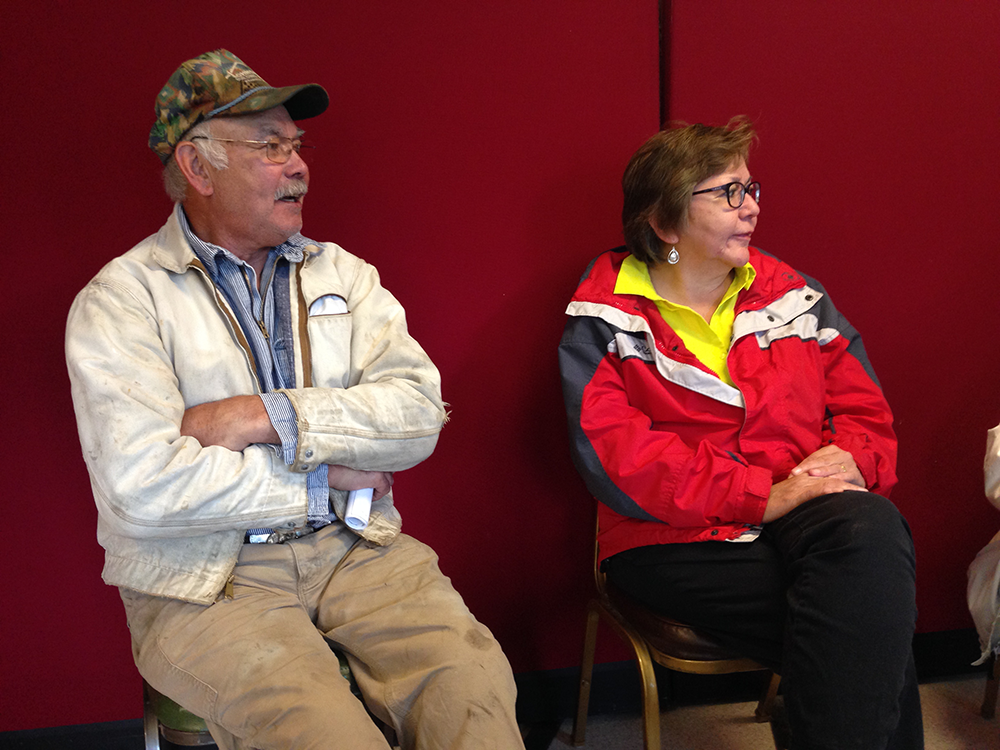
Tis Peterman and Einar Haasath (Photo: Emmett FitzGerald)
GALLA: In fact without the river I really doubt that Wrangell would be Wrangell. You know that’s kind of the big draw for us and I think kind of what put us on the map.
FITZGERALD: Tourism may be on the rise, but the biggest industry in Wrangell is fishing. There are two seafood processing plants with hundreds of employees, and tonight the harbor is packed with boats, back in town to sell their catch and refuel.
[SOUNDS OF THE STIKINE INN BAR]
One of those boats belongs Brian Meritt, an elementary school teacher and commercial fisherman. He meets me at the bar in the Stikine Inn, wearing a faded baseball cap and a NYPD sweatshirt. Brian says he’s been fishing since he was in elementary school.
MERITT: Started fishing with Dad, just kind of escalated from there. Bought my own boat when I was 19, put my way through college with it, that sort of thing, and it’s just I’ve always had a boat, then I got a teaching job.
FITZGERALD: A lot of Brian’s students come from fishing families, and he tries to teach his classes in a way they can relate to.
MERITT: I’ve brought King Salmon in, filleted them on the table, show kids the bone structure, the spine, and we’ve talked about the skin. If I catch a grey wolf when I’m trapping I’ll bring the whole thing right into the classroom, set it on the table, and we’ll look at his paws, his teeth, anyhow we do all sorts of dingdong things, we’ll bring in an octopus, sometimes I catch those in my shrimp pots we bring in an octopus check those out, it’s whatever’s around you bring in from the outside and it’s just a neat way to go with the kids.
FITZGERALD: Brian says that he takes each of his students out on his boat at least once during the school year. He knows his methods probably wouldn’t fly in any state other than Alaska, but that doesn’t bother him.
MERITT: Teachers contact me from California and say you know I’d be fired if I did that. I said well everybody knows me I’ve done it ever since I’ve taught I’ve been teaching for 25 years but it’s just an accepted thing in Wrangell, that’s how we teach science, that’s what the kids get to do, never had a complaint, ever, that I’m aware of.
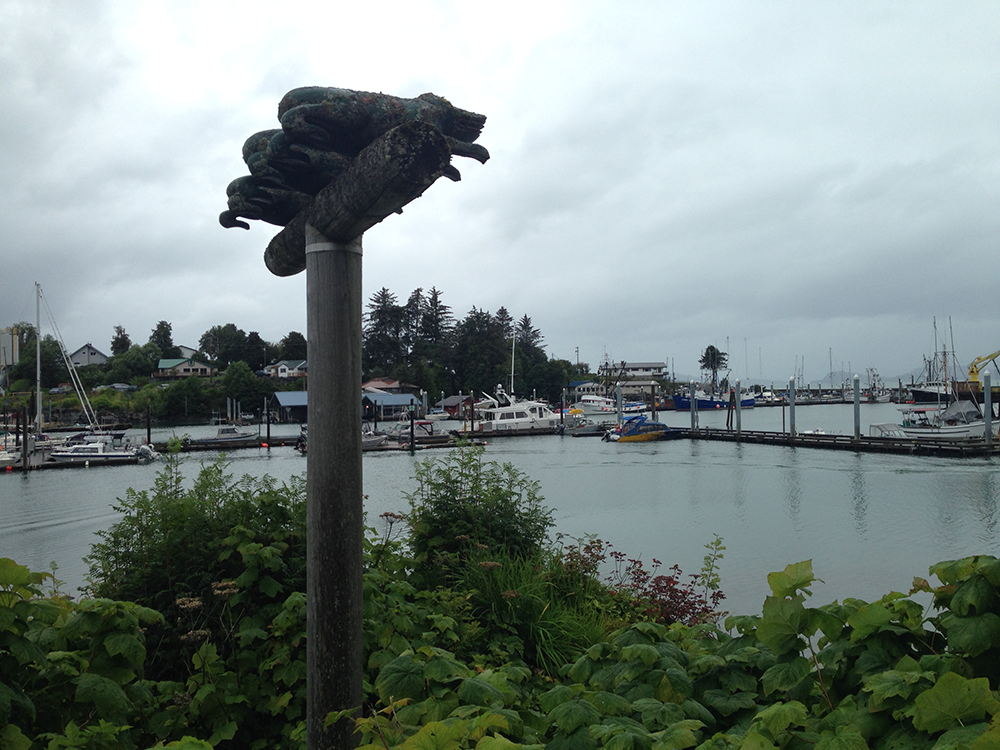
The harbor in Wrangell (Photo: Emmett FitzGerald)
FITZGERALD: With the school year about to start, Brian is in full fishing mode. In a couple of days he’ll be heading out for King Salmon, the most coveted of the salmon species in Alaska.
MERITT: I’ll get up at like 2:30 in the morning, take off in the dark, run for an hour, start putting my gear in the water just as it breaks daylight. You’ll fish all day till at least 9 - 9:30 whenever it starts to get dark. Usually anchored up by 11o’clock sometimes 10:30, and then 2:30 - 3 day starts again, charge back out, and you will do that day after day as long as you’re catching King Salmon. Nothing is better than that. I mean you live for that.
FITZGERALD: Brian’s fishing boat is versatile. Sometimes he uses it to set a gillnet near the mouths of rivers like the Stikine, waiting to catch salmon as they swim upstream to spawn. But more often he’s trolling out in the open ocean, dragging long lines with baited hooks behind the boat. It’s not the most efficient way to fish.
MERITT: You catch 1/20th the amount of fish trolling that you do gillnetting.
FITZGERALD: But Brian says nothing beats the thrill of trolling for King Salmon. You have to pick the right tackle, set your line at the proper depth, and fight to land the fish once they bite. Brian says it’s almost like sportfishing, except you’re making money.
MERITT: It’s the game of the mind. It’s the challenge of it, and of course King salmon are worth 70 to 100 dollars apiece, versus a Dog Salmon’s worth 6 dollars. So you’re targeting the high dollar fish.
FITZGERALD: Though Kings are the highest-dollar salmon; they’re also the scarcest. To supplement the wild stock, the State of Alaska and British Columbia release King Salmon reared in hatcheries. Alaska and BC have also set tight fishing regulations, allowing only small windows when you can fish for Kings. This Thursday is the beginning of the only King Salmon window this month.
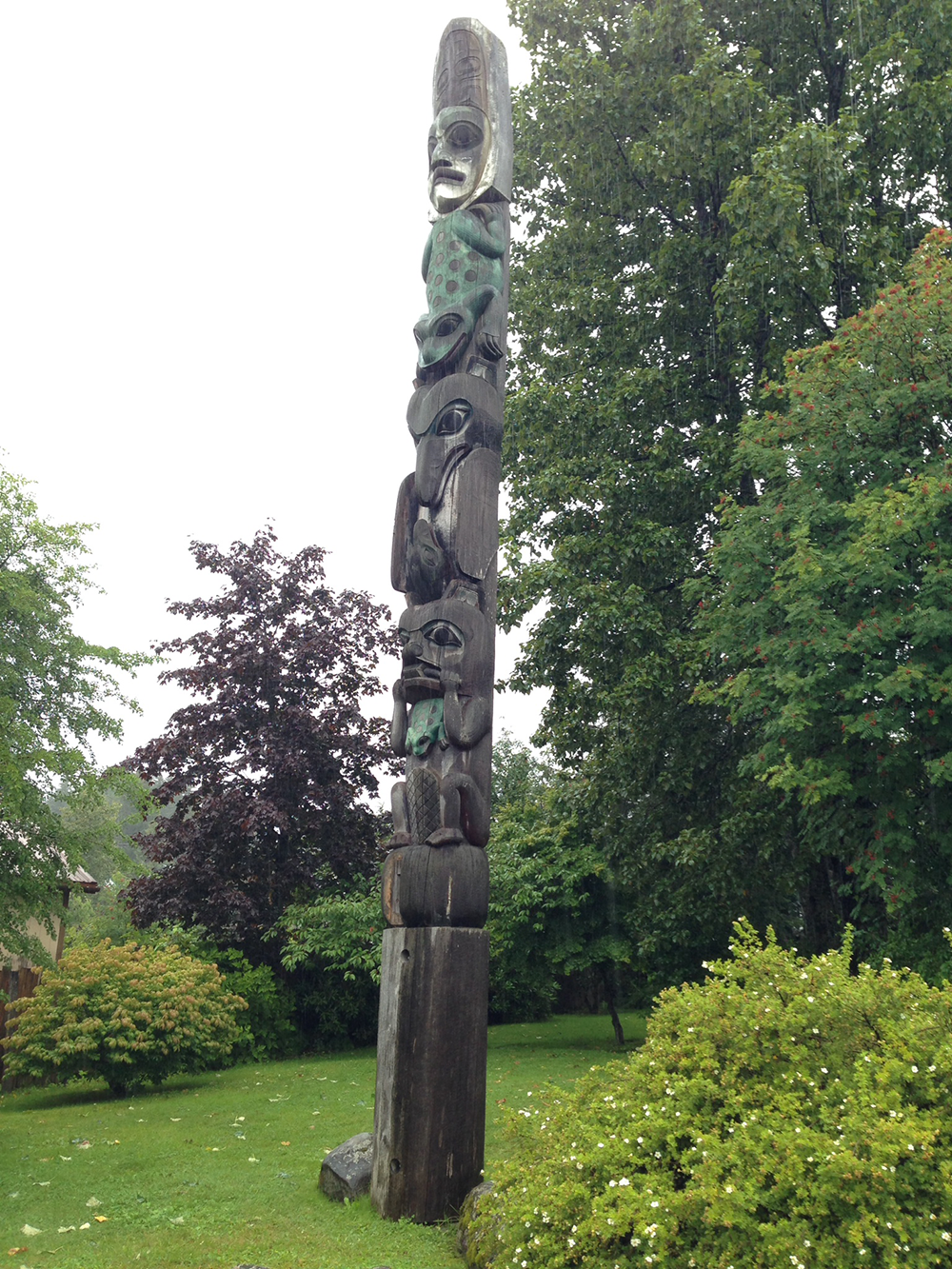
A Tlingit totem pole in Wrangell (Photo: Emmett FitzGerald)
MERITT: And if it’s blowing like a dog on Thursday most guys are going to tear off shore, and try to get to the fish, and crash boom bash it’s dangerous, but you only got three days to catch these Kings in August. So anyway that’s going to be the danger factor.
FITZGERALD: Brian says that most fishermen in Wrangell understand that this kind of regulation is needed to protect the species they depend on. Environmentalism can be a dirty word in a deep red, oil-rich state like Alaska, but Brian says fisherman know a threat to salmon when they see one, and mining development in British Columbia has him worried too.
MERITT: You know, I’m not opposed to using some of those resources, but when we’re talking about a mine and something might affect a major rivershed, then all of a sudden my opinion changes greatly.
FITZGERALD: The new mines still have serious financing hurdles to clear, but Imperial Metals, the owner of the Red Chris mine, could begin operations in early 2015. Imperial also owns the Mt. Polley Mine, where a tailings dam breach in the summer of 2014 sent massive amounts of toxic mining waste into the salmon-rich Fraser River. Tis Peterman is a Tlingit activist. She says that when she saw the video of the Mt. Polley spill, she couldn’t stop thinking about something like that happening on the Stikine. She says a spill like that could wipe out her small fishing town.
PETERMAN: As one elder told us, you want fish or you want mining? You can’t have both. And the fish is the base of our culture.
FITZGERALD: Tis says that the river has the power to unite people who haven’t always been allies.
PETERMAN: And this is the first time I’ve ever seen the commercial fisherman, subsistence fisherman, tribes, all on the same page. We all can see the potential devastation this stuff can cause.
FITZGERALD: Einar Haasath, a Tlingit elder, says that with the timber industry gone, Wrangell can’t afford to put the fishing industry at risk.
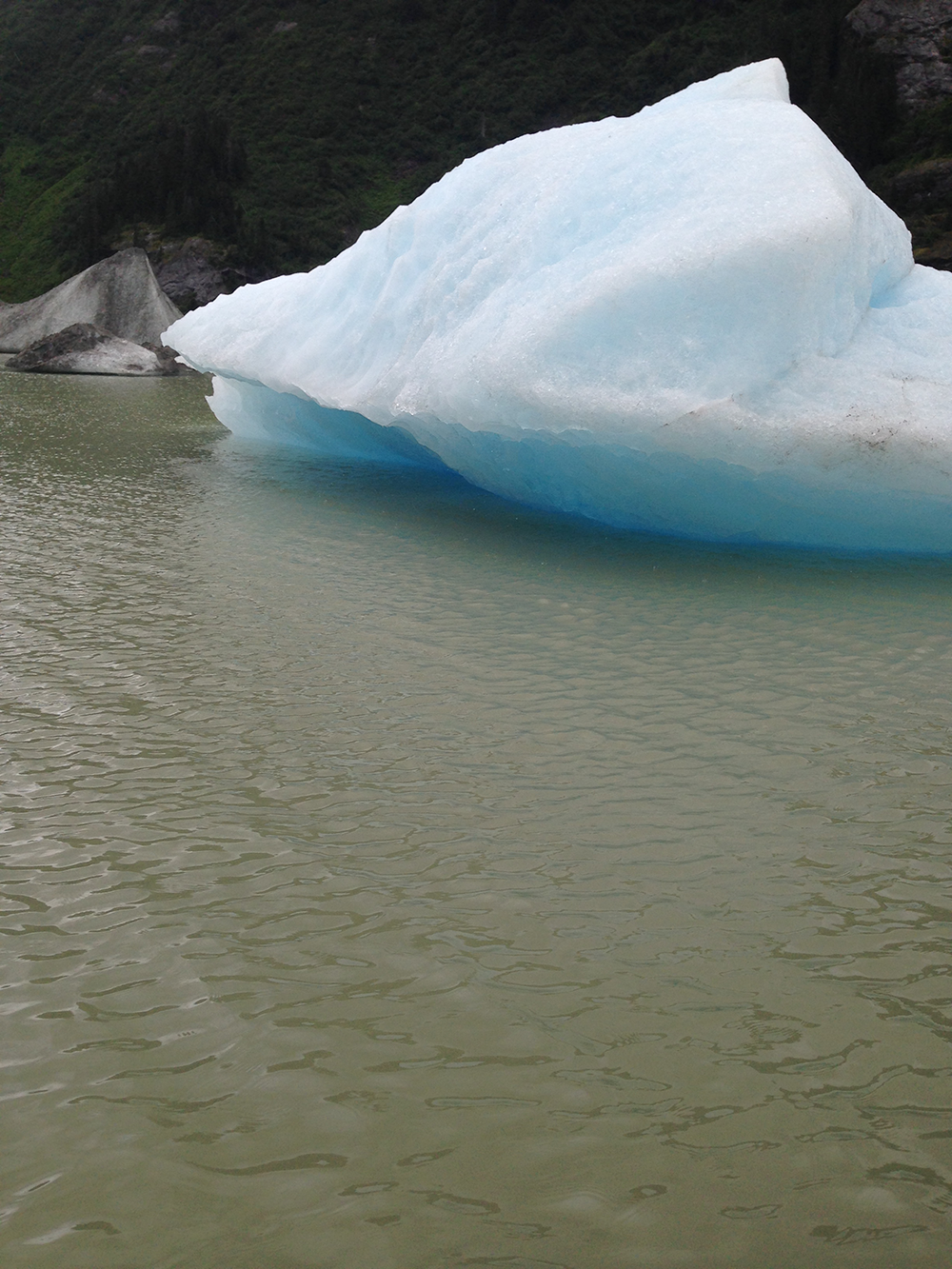
Shakes Lake, filled with icebergs that calved off of Shakes Glacier (Photo: Emmett FitzGerald)
HAASATH: If you lost the fishing industry you wouldn’t have anything. It would be a ghost town.
FITZGERALD: But for Einar, the need to protect the Stikine, one of the last great wild rivers and the river he grew up on, goes well its economic value.
HAASATH: The river is greatly important. And I would hate to see anything happen to it. People talk about industry and that sort of thing. Well, industry comes and goes, but a river, by golly, once you destroy it, it’s gone. You can’t bring it back.
FITZGERALD: The river and its riches made Wrangell possible, and for this little town on the edge of a continent to survive and thrive, the mighty Stikine may still be the key.
For Living on Earth, this is Emmett FitzGerald in Wrangell, Alaska.
Links
Read more about the city of Wrangell, Alaska
Living on Earth wants to hear from you!
Living on Earth
62 Calef Highway, Suite 212
Lee, NH 03861
Telephone: 617-287-4121
E-mail: comments@loe.org
Newsletter [Click here]
Donate to Living on Earth!
Living on Earth is an independent media program and relies entirely on contributions from listeners and institutions supporting public service. Please donate now to preserve an independent environmental voice.
NewsletterLiving on Earth offers a weekly delivery of the show's rundown to your mailbox. Sign up for our newsletter today!
 Sailors For The Sea: Be the change you want to sea.
Sailors For The Sea: Be the change you want to sea.
 The Grantham Foundation for the Protection of the Environment: Committed to protecting and improving the health of the global environment.
The Grantham Foundation for the Protection of the Environment: Committed to protecting and improving the health of the global environment.
 Contribute to Living on Earth and receive, as our gift to you, an archival print of one of Mark Seth Lender's extraordinary wildlife photographs. Follow the link to see Mark's current collection of photographs.
Contribute to Living on Earth and receive, as our gift to you, an archival print of one of Mark Seth Lender's extraordinary wildlife photographs. Follow the link to see Mark's current collection of photographs.
 Buy a signed copy of Mark Seth Lender's book Smeagull the Seagull & support Living on Earth
Buy a signed copy of Mark Seth Lender's book Smeagull the Seagull & support Living on Earth

